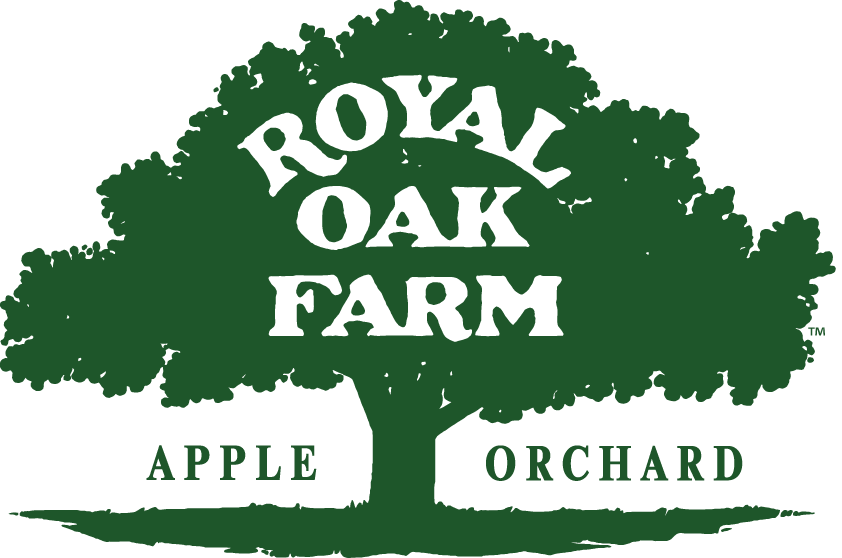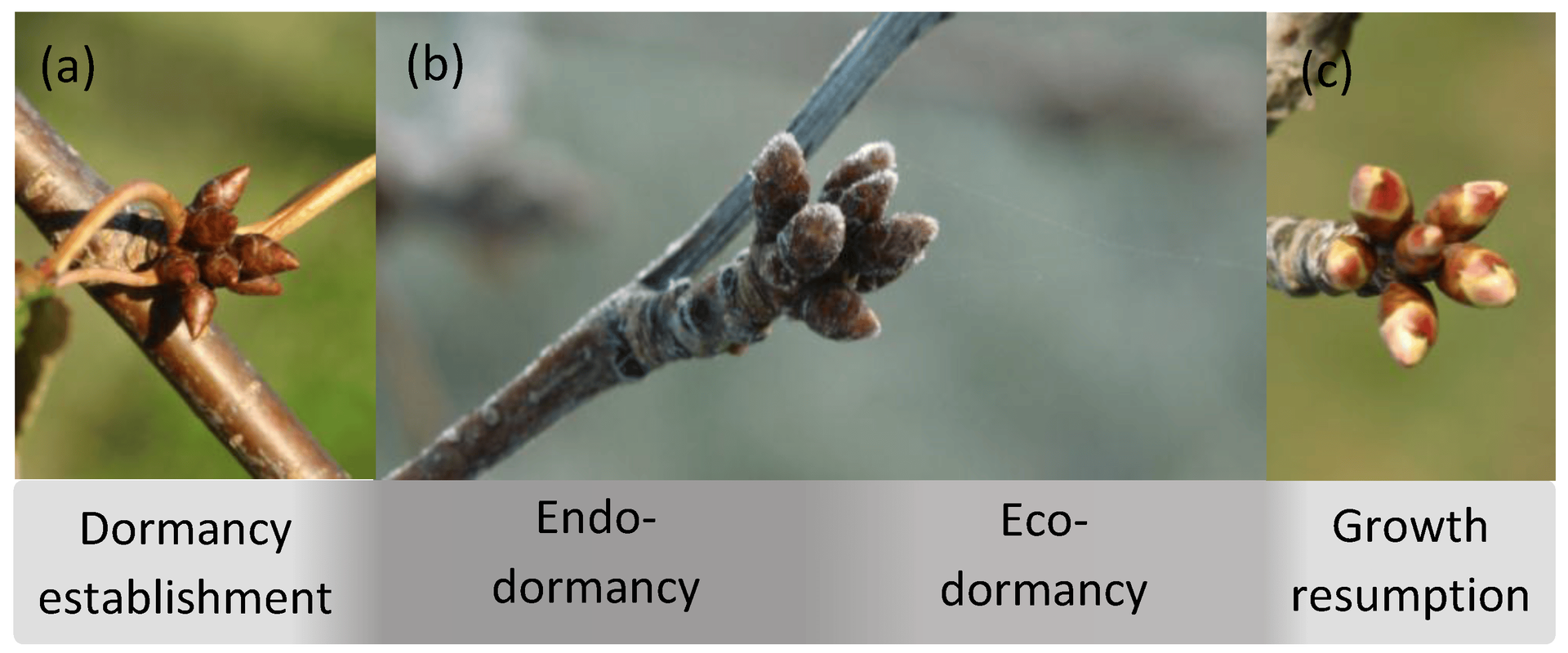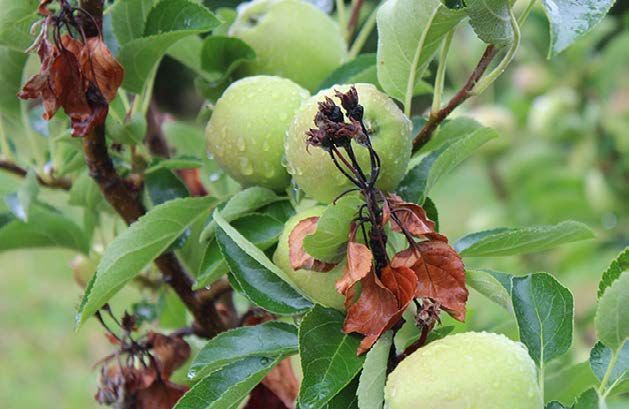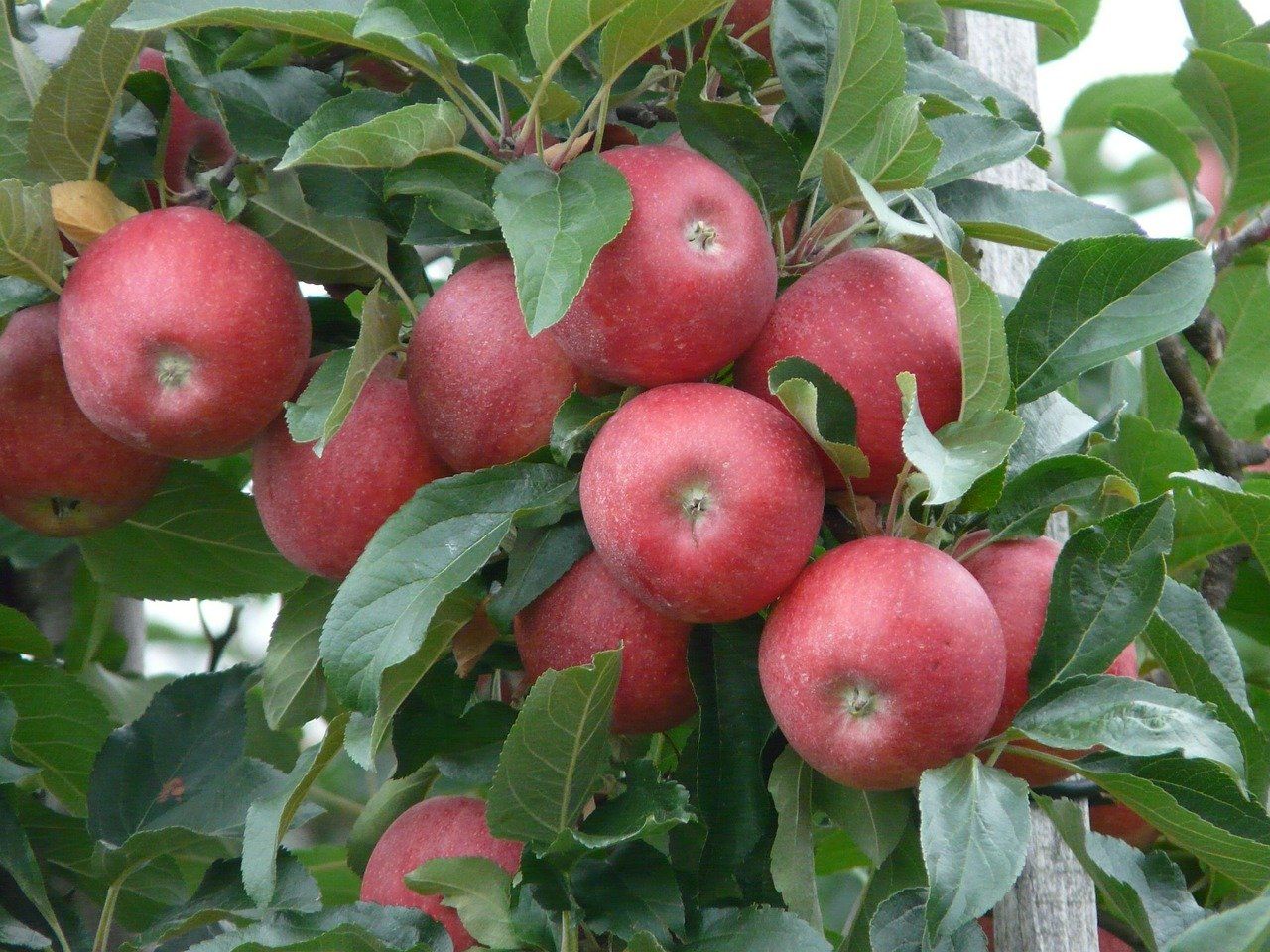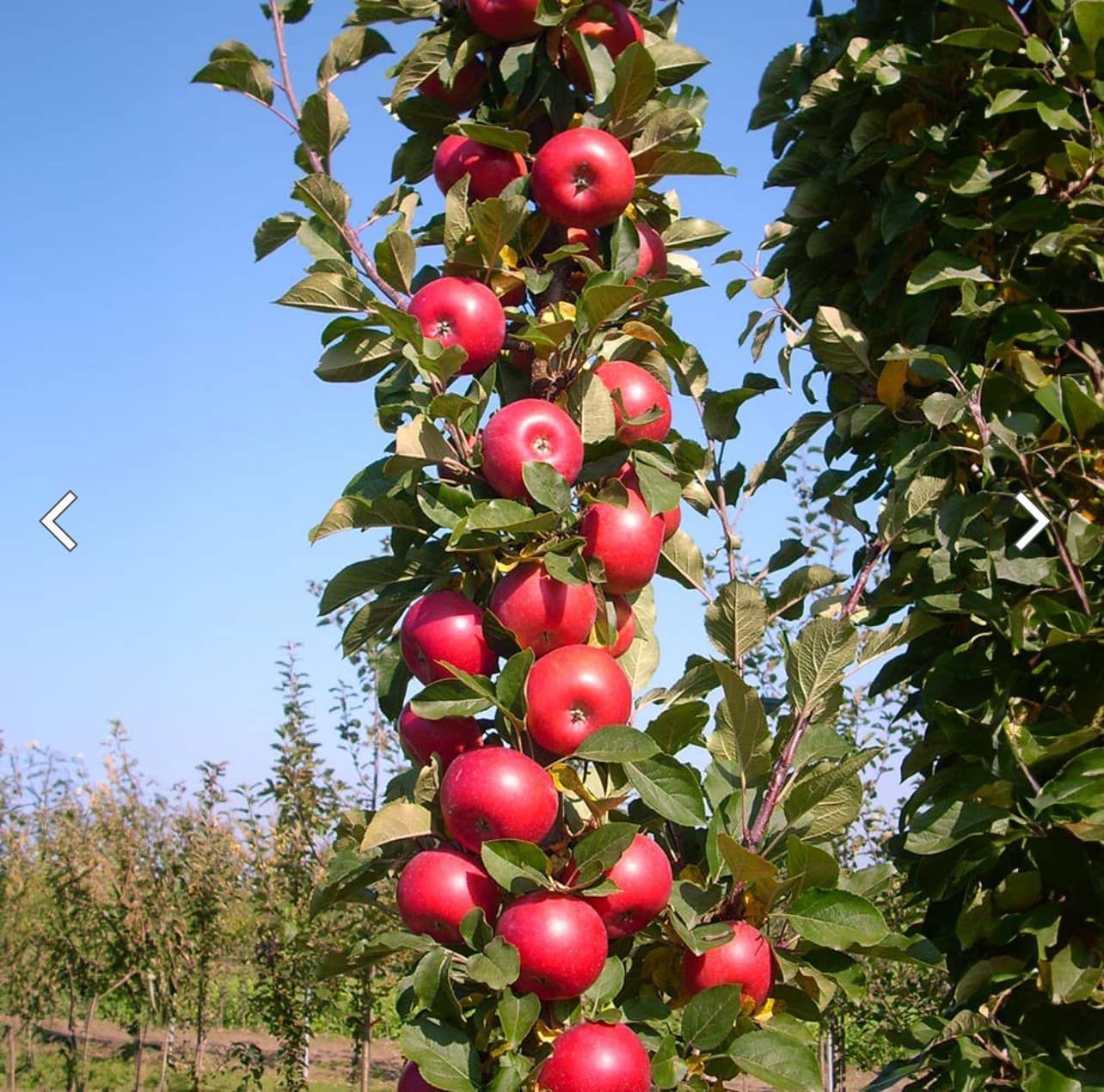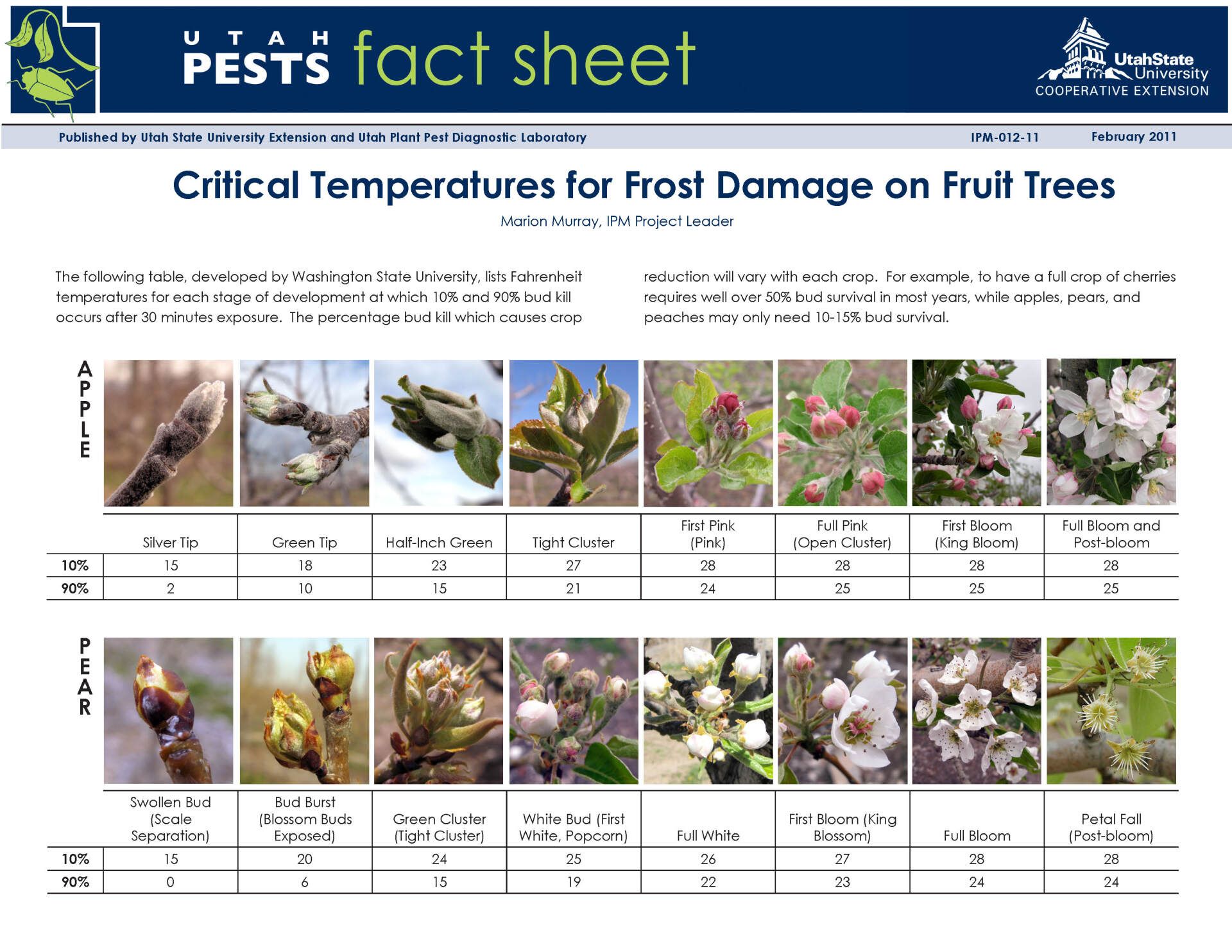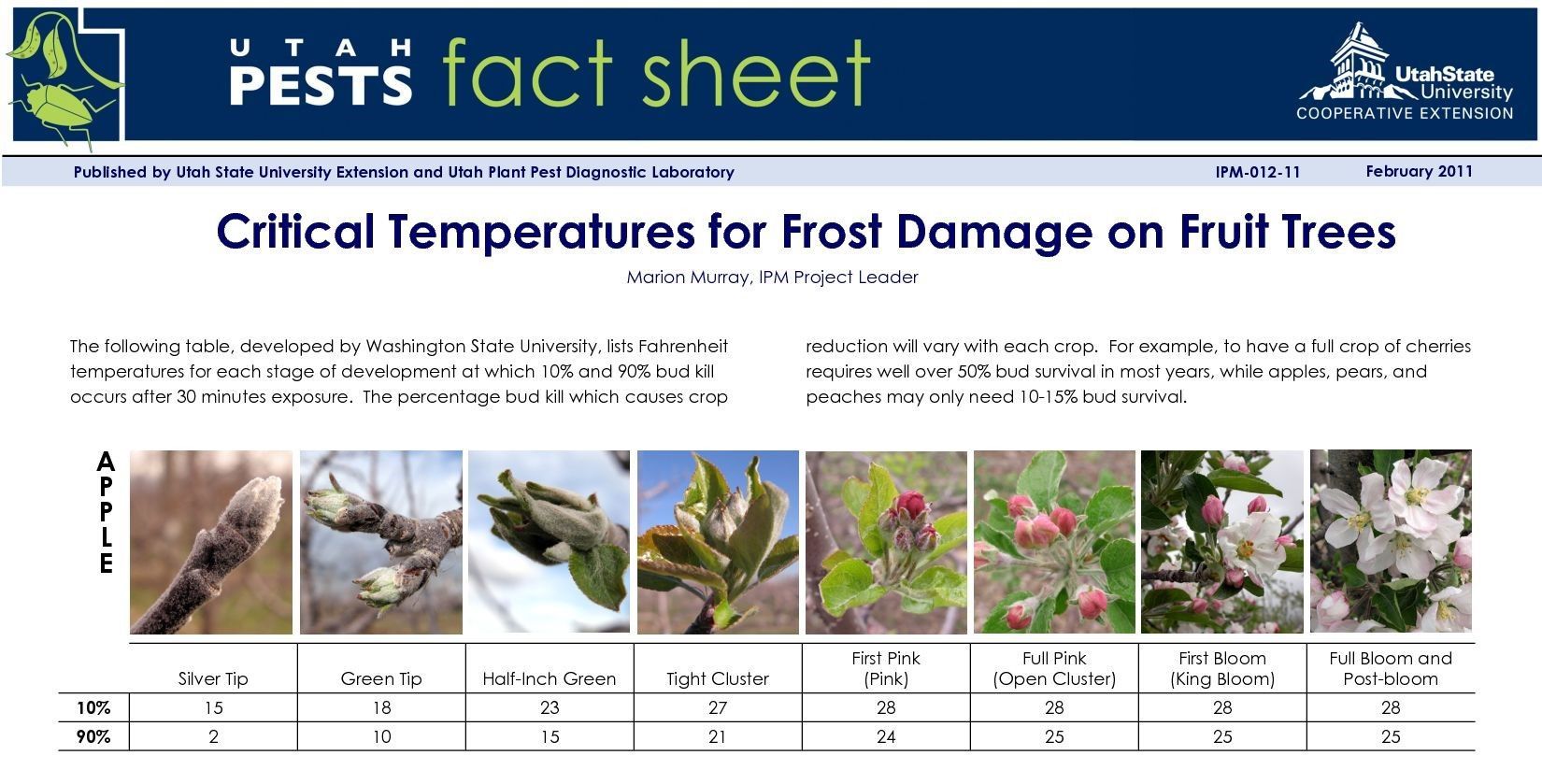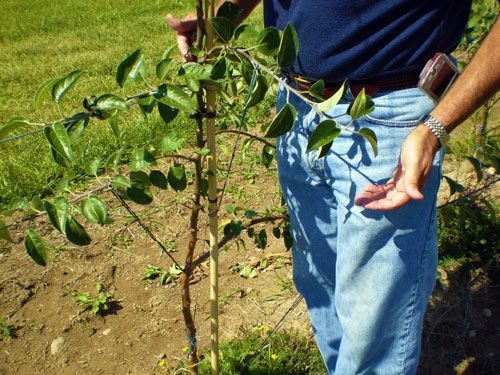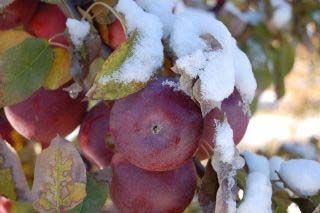A Word About Copper Compounds
Delayed Dormant Copper Sprays

A copper spray applied at the silver-tip bud stage has been recommended for more than 40 years as part of a fire blight control strategy for apples. Copper residues on the twigs and branches kill bacteria as they are released from over-wintering cankers. Cankers usually begin releasing bacteria when trees are at the pink or bloom stages. However, copper must be applied at silver tip to avoid the phytotoxicity that can occur with later applications once green leaf tissue is present. In years when more than three inches of rain occurs between the copper application and full bloom, the efficacy of the copper spray may be reduced because much of the copper residue will have been depleted before over-wintering cankers release bacteria.
In years when little or no rain occurs between the silver-tip copper application and bloom, fruit may develop copper-induced russetting because too much copper residue will still be present at bloom. To avoid the potential for phytotoxicity on apples, the copper rate should be reduced for any applications made after silver-tip, and no copper sprays should be applied to apples after half-inch green unless the block is intended for processing and fruit russetting is not a concern.
Copper Compounds are widely sold as fungicides for orchard use, but they have only minimal fungicidal properties. It may be necessary to apply dormant copper sprays on apples and pears for controlling fire blight and to aid in apple scab protection. Also, late dormancy is the time to apply oil for controlling certain insects. During dormant sprays, it is okay to mix oil and copper. Since minimal or no green tissue is present, the risk of phytotoxicity from the copper-oil mix is very low. Consequently, emergence of green tissue will want to be monitored when this combination spray is used. But, depending on the compound, they can be highly phytotoxic causing leaf burn or even death to many fruit crops and must be used with extreme care. It is extremely important to read the label of the product you intend to apply to determine the type of copper it is, the percentage of the active ingredient, and any cautions that accompany its use.
Copper ions release more readily under acidic conditions and copper pesticides, except copper sulfate pentahydrate, should not be used with acid forming products. Copper sulfate is readily soluble in water and can burn foliage and fruit (phytotoxicity). Fixed coppers have been developed that are relatively insoluble and therefore less toxic to plants, however, fixed coppers can also result in phytotoxicity under certain conditions. Copper phytotoxicity worsens under slow drying conditions and adding surfactants (stickers like molasses) with copper fungicides may increase injury to plant foliage. Common forms of fixed copper fungicides include copper sulfate, copper sulfate pentahydrate, copper hydroxide, copper oxychloride sulfate, cuprous oxide, copper diammonia diacetate and copper octanoate.
All of the different copper solutions can be confusing, so let me simplify it by taking a look at the copper present as copper octanoate, also known as copper soap. Earlier I stated that copper ions release more readily under acidic conditions and copper pesticides, except copper sulfate pentahydrate, should not be used with acid forming products. An exception to this is copper octanoate. Copper octanoate is a fatty acid salt (soap) that combines copper and octanoic acid. It is a contact fungicide and bactericide that can be applied to foliage to control or suppress various plant diseases on a broad range of agricultural and ornamental crops, based on label directions. Bonide Copper Fungicide is made up of copper octanoate and is generally the copper I usually recommend for home apple growers since it is one of the safer forms of copper to use. Cueva is also the same product with the same amount of copper octanoate. No matter what copper product you choose to use, ALWAYS follow the label directions.
The best time to spray the copper product you have chosen is at the delayed dormant stage of the tree development stages. This is just before the buds turn to silver tip. Spraying your copper too soon can have no effect at all if the tree has not started to come out of dormancy yet.
The effectiveness of a copper application is determined by several factors. Small particle size is best because these adhere better to plant surfaces and are more difficult to dislodge by water than large particles. Additionally, spray coverage will improve due to there being more particles per unit weight. Low solubility in water of fixed copper active ingredients contributes to residual activity. Copper ions are released over time from spray deposit when water is present. In contrast, copper sulfate pentahydrate is highly soluble. Acidity (low pH) increases solubility of fixed copper, which increases effectiveness initially but shortens residual activity and thus sustained control, and also increases potential for phytotoxicity.
Additional factors that can greatly affect efficacy of a copper application include: when applications started relative to disease onset (best is before first infection, which occurs at least 5 days before symptoms), length of drying time afterwards before rain or overhead irrigation (check rainfastness of product), amount of water and intensity (a 2-inch downpour can remove a lot of residue), timing of application relative to rain event (before with enough time to thoroughly dry is ideal because this will provide favorable conditions for infection), occurrence of dew (water enables more copper ions to be released), coverage achieved with the sprayer (copper fungicides do not move inside plants), rate (high label rate better than low), and frequency of application.
The specific directions on fungicide labels must be adhered to. They supersede these recommendations (above), if there is a conflict. Any reference to commercial products, trade or brand names is for information only; no endorsement is intended.
Reference in this blog to any specific commercial product, process, or service, or the use of any trade, firm, or corporation name is for general informational purposes only and does not constitute an endorsement, recommendation, or certification of any kind by Royal Oak Farm, Inc. People using such products assume responsibility for their use in accordance with current label directions of the manufacturer.
Backyard Orchard Management @ Royal Oak Farm Orchard
Backyard Orchard Management @ Royal Oak Farm Orchard is a blog for the home fruit tree grower providing information about fruit tree management, fruit tree pruning & training and Integrated Pest Management from the IPM Specialist and Certified Nurseryman at Royal Oak Farm Orchard, a 22,000 tree apple orchard and agri-tourism operation located in Harvard, Illinois.
Click or tap any title to read that post.

